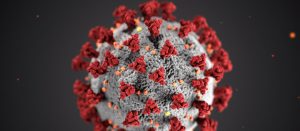
Artificial Blood Vessels Like Real Ones
Did you know that 450,000 patients in the US per year are treated by surgeons for blood clots, coronary disease, stroke damage and more? They replace the damaged part of a blood vessel with a grafted blood vessel. They follow-up by monitoring with CT scans, ultrasounds and other costly imaging procedures. Still and all, a significant 40-50% of those grafted vessels fail.
Over at the University of Wisconsin-Madison, materials science engineers are developing a new, 3D printed artery graft that is made of a flexible composite. The artificial blood vessel, when implanted, allows real time monitoring, even remotely, so that doctors and patients can track its health or issues it may have.
3D geometry constructed the vessel that can produce electric pulses based on the patient’s pressure fluctuation which can tell the blood pressure with precision in that vessel without any other power source. Doctors can tell if there is an irregular motion due to blockage inside in the very early stages.
This is a long-term project by the team with their interest in new soft, flexible materials that are piezoelectric or able to produce an electric charge from mechanical stress, and biocompatible, meaning it will not be damaged or rejected by the body. They used a combination of materials that are capable of flipping polarity when an electric field is applied. Only a regular 3D printer was used that extruded the material through a strong electric field close to the nozzle to polarize the particles, giving the structure its piezoelectric property. When done, the artificial blood vessel was hooked up to an artificial heart system then simulated high blood pressure, blockages, and other issues that beset blood vessels. Due to the unique material used changes in force and pressure within the artery were easily detected.
So what is next for the team? They want to optimize the production of the new ferroelectric composite and the 3D printing process, find ways to make the printed 3D structure even more sensitive, and collaborate with other researchers to test the artery with even more realistic models of the circulatory system. They foresee using the new material to print artificial heart valves.
This new study was published in the journal Advanced Functional Materials.



